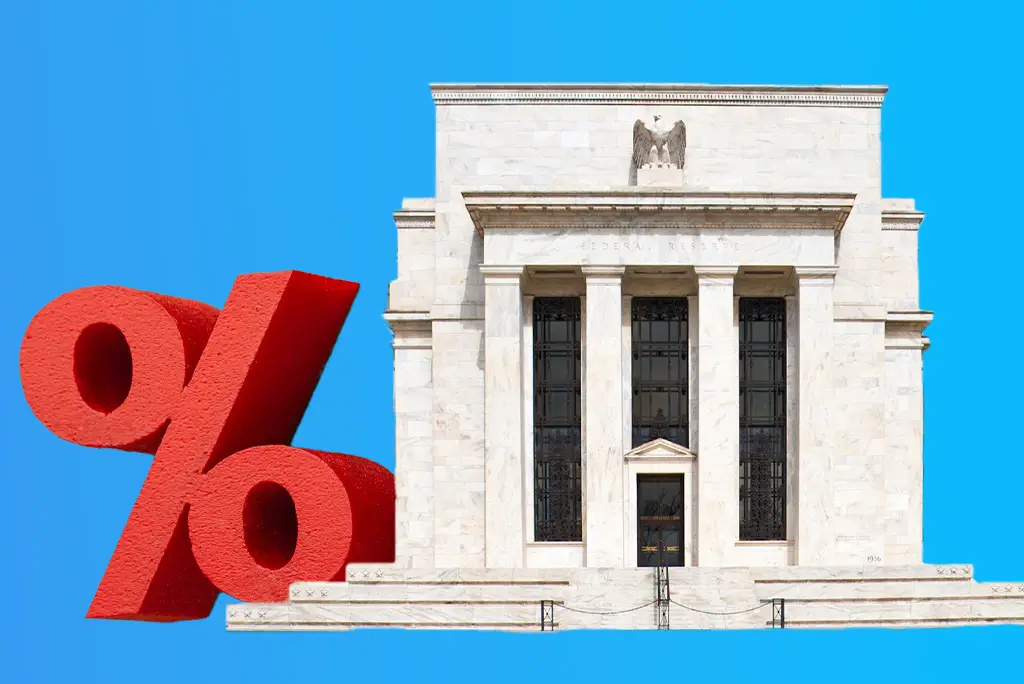Experts predict the Federal Reserve will probably avoid interest rate hikes during this week’s September meeting. Consumers may not experience any relief despite the anticipated rate freeze.
Since last year, the central bank has implemented 11 interest rate hikes, marking the swiftest tightening since the early 1980s.
Despite recent data, the economy’s status remains uncertain, with stable overall growth fueled by consumer spending.
However, the labor market is gradually easing from its historically tight state.
Although still above the Fed’s 2% target, inflation has displayed signs of calming down concurrently. Greg McBride, chief financial analyst at Bankrate.com, emphasized that the Fed is far from considering rate cuts.
According to McBride, rates are currently elevated and are expected to remain at high levels for an extended period. The US central bank determines the federal funds rate used by banks for overnight borrowing and lending.
Fed rate hikes influence credit card rates
The Fed’s decisions indirectly but significantly impact the interest rates consumers encounter in their daily financial transactions.
The Fed’s benchmark rate directly impacts the variable rates common in credit cards. Following recent rate increases, the average credit card rate has reached a record-breaking level of over 20%.
A Bankrate report indicates that elevated rates coincide with higher balances, with nearly half of credit card users carrying month-to-month debt.
Inflation and Fed policy impact mortgage rates and borrowing costs
Despite the fixed nature of 15-year and 30-year mortgage rates, they are linked to Treasury yields and the economy. Inflation and the Fed’s policy decisions have collectively contributed to a significant reduction in purchasing power for those in the market for a new home.
Sam Khater, the chief economist at Freddie Mac, noted that 30-year fixed-rate mortgages continue to hover above 7%. Elevated mortgage rates persist due to the resurgence of inflation and robust economic conditions.
Adjustable-rate mortgages (ARMs) and home equity lines of credit (HELOCs) are linked to the prime rate. The prime rate increased in tandem with the federal funds rate, causing corresponding rises in these interest rates.
Elevated HELOC and auto loan rates signal borrowing challenges
Bankrate reports the current average HELOC rate at 9.12%, marking its highest level in 22 years. According to McBride, this elevated HELOC rate underscores the importance of prioritizing repayment, emphasizing its shift from low-cost debt.
While auto loan rates remain stable, rising car prices and increasing interest rates are causing larger monthly payments. According to Bankrate, the average interest rate for a five-year new car loan has reached 7.46%, the highest level in a decade and a half.
Experts suggest that individuals with higher credit scores might access more favorable loan terms or explore improved offers.
According to a recent LendingTree report, car purchasers could potentially save an average of $5,198 by opting for the lowest APR deal over the highest one.
Student Loan rates rise, interest resumes on existing debt
Most federal student loan rates remain stable and are unaffected by the Federal Reserve’s actions. However, undergraduate students obtaining new direct federal student loans now face an interest rate of 5.50%.
This marks an increase from the rates of 4.99% in the 2022-23 academic year and 3.73% in 2021-22 for these loans.
Interest began accumulating again on existing debt starting from September 1. Millions of borrowers will resume making student loan payments in October after a three-year suspension.
Private student loans typically come with variable rates linked to Libor, prime, or Treasury bill rates, resulting in higher interest costs. The extent of the additional interest payments varies depending on the chosen benchmark.
Deposit Rates rise while lag online offerings, potential slowdown ahead
Although the Federal Reserve cannot directly affect deposit rates, these rates often correlate with shifts in the federal funds rate.
According to the FDIC, savings account interest rates at major retail banks, which were exceptionally low throughout most of the COVID-19 pandemic, now average around 0.43%.
According to Ken Tumin, the founder of DepositAccounts.com, while average rates have climbed in the last year, they still lag behind online rates significantly.
Savers are currently able to earn the highest returns in over 15 years, as online savings account rates have surpassed the 5% mark, aided by lower overhead expenses.
Tumin suggested that if the Fed pauses rate hikes during its September meeting, the growth in deposit rates is expected to decelerate.
